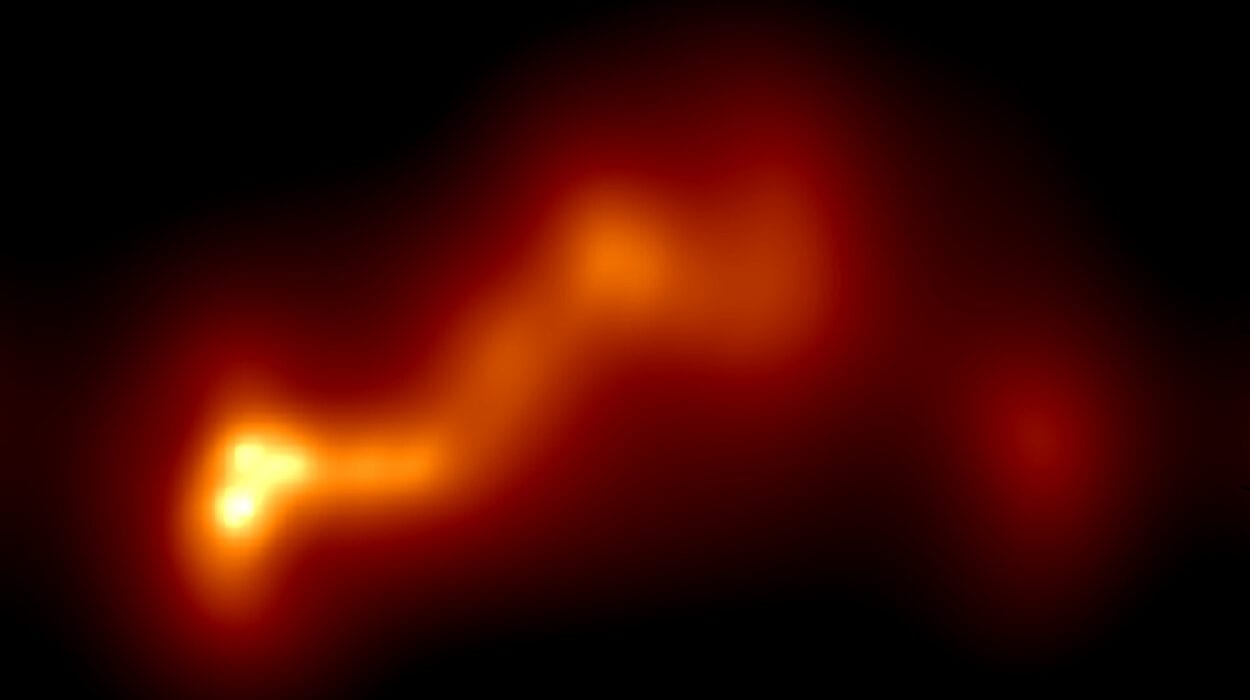For decades, Mars has stared back at us through dusty winds and thin air, guarding the mysteries of its red skies. But now, scientists have caught the Martian atmosphere in a rare moment—under the blazing sun of midday—revealing new and surprising secrets about its ionosphere, the electrically charged region of the upper atmosphere that plays a vital role in planetary weather, solar interactions, and spacecraft communications.
In a breakthrough study published in Journal of Geophysical Research: Planets, Jacob Parrot and colleagues have managed to peer into a part of Mars that has long eluded researchers: its ionosphere at midday. Thanks to an innovative technique known as mutual radio occultation, the team was able to chart uncharted atmospheric territory, unlocking a more complete understanding of how Mars responds to the sun’s energy and how it might support—or disrupt—future human exploration.
The Electric Halo of a Cold Planet
Like Earth, Mars is wrapped in an ionosphere—a layer high in its atmosphere where ultraviolet radiation from the Sun strips electrons from atoms and molecules, forming a sea of electrically charged particles. Though tenuous compared to Earth’s, Mars’ ionosphere is no less important. It governs how radio waves travel, how solar storms affect the surface, and how atmospheric gases slowly leak into space.
Traditionally, scientists have studied this layer using radio occultation, a clever method where spacecraft orbiting Mars send radio signals to Earth. As these signals pass through the Martian ionosphere, they bend slightly, depending on the density and composition of the charged particles they encounter. The degree of bending reveals a wealth of information—like taking a CAT scan of the planet’s edge.
But there’s a hitch.
Because this technique depends on the positions of Mars, Earth, and the Sun, scientists have never been able to measure the ionosphere during the Martian midday, when the Sun is directly overhead. This left a conspicuous blind spot in our understanding—precisely during the time of day when solar radiation is most intense and atmospheric reactions are likely most dynamic.
Turning Mars Against Itself: Mutual Occultation Arrives
To solve this challenge, Parrot’s team turned the Red Planet into its own laboratory. Using mutual radio occultation, they beamed radio signals not from Mars to Earth, but from one satellite orbiting Mars to another. This setup allowed the signal to skim across the Martian atmosphere at different angles and times—including, crucially, during midday.
The researchers analyzed 71 of these mutual occultation events recorded between two European Space Agency orbiters: Mars Express and the ExoMars Trace Gas Orbiter. Of those, 35 events captured data closer to the Martian noon than had ever been possible before.
For the first time, scientists could track how electron density changes across the entire Martian day, uncover the behavior of previously misunderstood atmospheric layers, and calculate temperature fluctuations with fresh clarity.
Rewriting the Martian Ionosphere Playbook
What they discovered challenged long-held assumptions.
Mars’ ionosphere is traditionally described in terms of two layers: M1, the lower layer, and M2, the upper and usually denser region. Earlier studies, limited by observational gaps around midday, often assumed that M1 fades out during midday, overwhelmed by the harsh solar radiation. But this new data tells a different story.
The M1 layer persists, even under the full glare of the midday Sun. It doesn’t vanish—it endures.
Meanwhile, M2’s electron density—a measure of how many charged particles are present—was found to be surprisingly stable throughout the day. Previous models suggested dramatic fluctuations with sunlight exposure. Instead, the reality appears more nuanced. The ionosphere’s behavior is not as closely tied to the Sun’s position as we once thought.
Perhaps most intriguingly, when researchers calculated ionospheric temperatures, they found that the hottest part of the day wasn’t when the Sun was highest in the sky, but rather as the Sun dipped toward the Martian horizon. In other words, Mars’ ionosphere heats up toward sunset, not noon.
This counterintuitive result suggests that atmospheric winds—currents of air moving heat across altitudes and latitudes—are playing a dominant role in shaping the upper atmosphere’s thermal behavior. It’s not just solar radiation at work. Mars is a world of moving parts, with dynamic interactions that mimic Earth’s complexity in miniature.
Why It Matters: Navigating the Future of Mars Exploration
Understanding the Martian ionosphere isn’t just an academic pursuit—it has real consequences for future missions. As space agencies and private companies prepare for potential human voyages to the Red Planet, reliable communication is critical. Radio signals traveling between Mars rovers, orbiters, and Earth must navigate the ionosphere. If this layer is poorly understood, signals can be distorted, delayed, or lost.
More broadly, the ionosphere serves as a vital interface between Mars and space. It acts as a shield, absorbing and scattering solar and cosmic radiation. Understanding how it behaves helps scientists model atmospheric escape, the process by which Mars has lost much of its ancient atmosphere over time. Such escape processes are believed to be key to understanding Mars’ transition from a once-warm, water-rich world to the arid, frozen desert it is today.
By capturing data from the Martian midday—the period of maximum solar exposure—researchers can now feed more accurate parameters into climate models. This helps simulate both the present Martian environment and its ancient climate, possibly unlocking secrets about its ability to support life, past or present.
Two Robots, One Mission: A Collaboration in Orbit
That this breakthrough was achieved by two robotic spacecraft passing radio signals back and forth—like sentinels whispering across the Martian sky—underscores the sophistication of modern planetary science. Mars Express, launched in 2003, and the ExoMars Trace Gas Orbiter, launched in 2016, were not originally designed for mutual occultation experiments. Yet clever engineering and scientific ingenuity turned them into a powerful tandem observatory.
Their collaboration exemplifies the creative ways scientists are pushing the boundaries of what’s possible with existing hardware. In an era where budgets are tight and space missions take years to launch, innovative use of current assets can still yield groundbreaking discoveries.
A New Dawn for Martian Atmosphere Research
The Martian ionosphere is no longer a mystery veiled in midday shadow. Thanks to mutual radio occultation, scientists now have a fuller picture of how this electrically charged region behaves across the entire day—revealing a richer, more intricate planet than models ever predicted.
The findings mark not just an advance in our knowledge of Mars, but a triumph of scientific imagination. By flipping the script on a decades-old method and turning Mars into its own listening post, researchers have written a new chapter in planetary exploration.
Mars, it seems, is not done surprising us. Its skies may be thinner, its air colder, but its atmosphere still dances with solar fire and invisible winds—and now, we’re finally beginning to understand the rhythm.
Reference: Jacob Parrott et al, Ionospheric Analysis With Martian Mutual Radio Occultation, Journal of Geophysical Research: Planets (2025). DOI: 10.1029/2024JE008854






